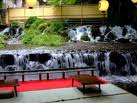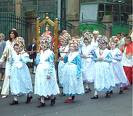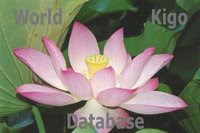:::::::::::::::::::::::::::::::::::::::::::::::::::::::::::::::::::::::::::::::::::::::::::::::::::::
Crane (tsuru)
***** Location: Japan, other areas
***** Season: Various, see below
***** Category: Animal
*****************************
Explanation


. . . . . Kigo for Winter
crane, tsuru 鶴
Family of the Grus.
Hooded crane, nabezuru 鍋鶴 Grus monachus
White naped crane, manazuru 真鶴 Grus vipio
crane with a read head, tanchoo 丹頂 Grus japonesis
crane with black wings, sodeguro tsuru 袖黒鶴
black crane, common crane, kurozuru 黒鶴
Demoiselle crane, anehazuru 姉羽鶴
Sandhill crane, Canada Crane
Cranes start coming to Japan in October and stay there over winter. In Spring they leave for the North.
The crane is a well-loved animal in Japan.
It comes to feed along the beaches and when it calls for its mate or its chicks, people of old felt the loneliness of a person, or a lonely traveler, longing for company.
It is a symobl for long life in Chinese and Japanese from ancient times on. In the article on bamboo as a kigo, we covered
Bamboo, Crane and the Turtle are a group for Long Life.
Another winter kigo with variations is
cranes standing in the cold, itezuru 凍鶴
"freezing crane" , tsuru itsu 鶴凍
frost for the cranes, shimo no tsuru 霜の鶴
cranes in a frosty night, shimoyo no tsuru 霜夜の鶴
Imagine a cold night when the cranes stand on one leg only, trying to keep warm. You can see them in parks and in the free nature. They evoke a feeling of pitty in the human soul.
In Ancient China, the crane too was a symbol of Long Life and also the symbol of the relationship of Father and Son according to the Confucian philosophy. Furthermore the crane is a symbol of wisdom. When a high-ranking Taoist priest died, it was said he was "turning into a crane".
:::::::::::::::::::::::::::::::::::::::::::::::::::::::::::::::::::::::::::::::::::::::::::::::::::

Detail from an 18th century rokkyoku-issho byobu from a private Honolulu collection; remounted by Yasumi Restoration.
- Shared by Jon Kostiner - Yasumi Restoration -
Joys of Japan, October 2012
:::::::::::::::::::::::::::::::::::::::::::::::::::::::::::::::::::::::::::::::::::::::::::::::::::
The Crane in Japanese Poetry
by Paul [choshi]
In Classical Japanese court poetry
the image of the crane was often used to symbolize the poet himself.
Without this knowledge, a poem might appear simply as a beautiful and moving objective depiction of nature. In the hands of a gifted poet, such poems can be evocative and a joy to read. This misperception of Japanese court poetry has been further promoted in the west through the view that this body of poetry values pure objectivity and lacks any symbolic meaning.
However, with an awareness of the symbolism and the historical context of the poem, the reader's experience can become deeply enriched beyond the surface beauty of the poem. Here is an example based on historical facts:
Teika (1162-1241) was a gifted poet of the Japanese court and son of the influential and gifted Shunzei (1114-1204. Tieka has exerted an deep and lasting influence on generations of poets. He was a natural- born poet with precocious talent. However, he also had a highly unstable personality. By today's standards he would probably be described as suffering from "bi-polar disorder" or "manic depression." As a result, he did not always get along very well with others. For instance, he had a highly volatile relationship with the Emperor Go-toba. [Go-toba authorized and supervised the editing of the Imperial poetry anthology "Shinkokinshu" (New Collection of Ancient and Modern Poems)].
He also organized many poetry contests. As a result of Tieka's often inappropriate behavior, Go-toba banished him from the court. Here are three related poems: [Note that "the place beyond the clouds" refers to the Imperial Palace] In the first Shuzei attempts to intervene on his son's behalf.
The second poem, was written by Akahito to convey Go-toba's displeasure with Teika. Shuzai again responds.
The crane which cries
as it heads toward the reeds
by Poetry Bay-
why can it not return
to that place beyond the clouds
Shunzei
At Waka Bay
as the tide comes flooding in
till tide pools disappear,
heading toward the reeds,
cranes fly overhead.
Yamabe Akahito
The year drew to a close
with the reed-dwelling crane
still wandering on cloud paths.
Now will Spring mists, too
be allowed to block its way
Shunzei
In reply, the retired emperor Go-toba [he was about 18 and already retired!!!] forgave Teika and he had Fujiwara Sadanaga respond. The latter wrote:
The reed-dwelling crane
parts Spring mists,
and now returns,
the clouds through which it wandered
from today are cleared.
Sources:
Waiting for the Wind: Thirty-six Poets of Japan's Late Medieval Age
By: Steven B. Carter [Columbia University Press: 1989] Waiting for the Wind
The Making of Shinkokinshu By: Robert N. Huey [Harvard University Press: 2002]
Book Link
Original at : Crane Haven by Choshi
:::::::::::::::::::::::::::::::::::::::::::::::::::::::::::::::::::::::::::::::::::::::::::::::::::
In the Flower Trump Game (hanafuda)

http://www.hana300.com/aafuda.html
January :
Pine and Crane, Matsu ni Tsuru 松に鶴
Pine (matsu) a kigo
More details about the Crane and Turtle as auspicious symbols
By Gabi Greve
World Kigo Database: Flower Trump Hanafuda
*****************************
Worldwide use
Bhutan
. Black-necked Crane, Grus nigricollis
Tibetan Crane, black neck crane
:::::::::::::::::::::::::::::::::::::::::::::::::::::::::::::::::::::::::::::::::::::::::::::::::::::
Germany
Kranich
Flucht des Kranichs, Haiku-Kunst
Haiku von Jochen Neuhaus
http://www.onlinekunst.de/neuhaus/kranich.html
xxxxxxxxxxxxxxxxxxx
Kranich is also the logo for Lufthansa!
http://konzern.lufthansa.com/en/html/ueber_uns/flotte/index.html
Here is a story about Lufthansa and some real live cranes :
http://50.lufthansa.com/php/geschichten_detail.php?lang=en&id=283
And here a web site on cranes and their protection in Germany :
http://www.kraniche.de/
Isabelle Prondzynski
xxxxxxxxxxxxxxxxxxxxxxxxxxxxx
India
Indian Music and the Crane
by Kala Ramesh
In music to stand perfectly on a note without going off-key is extremely difficult and then to give it life - so that it becomes a singing pulsating note is almost akin to reaching god.
to stand crane-like
on a singing note -
morning concert
:::::::::::::::::::::::::::::::::::::::::::::::::::::::::::::::::::::::::::::::::::::::::::::::::::
Uganda
The crested crane is Uganda's national bird --
and the most gorgeous bird I have ever seen. It lives in Kenya too, but nowhere near Nairobi. My most vivid memory of a crested crane is landing at the tiny airport on Manda Island, off Lamu Island on the Indian Ocean coast. As our little 6-seater prepared to touch the ground, a crested crane gracefully moved aside, leaving the runway to us for a while.
Good web sites :
http://www.ugandamission.net/aboutug/graphics/symbols.html
which explains the Uganda flag and coat of arms, both complete with crested crane.
http://www.uweczoo.org/crested_crane.html
explanations, background, photo
http://www.trekearth.com/gallery/Africa/Uganda/photo98012.htm
close-up photo
http://www.timetableimages.com/ttimages/qu.htm
Uganda Airways also uses the crested crane as its symbol.
Isabelle Prondzynski
*****************************
Things found on the way
1000 Folded Paper Cranes, senbazuru 千羽鶴
World Kigo Database : Hiroshima Day
:::::::::::::::::::::::::::::::::::::::::::::::::::::::::::::::::::::::::::::::::::::::::::::::::::
. matsukuwaezuru 松くわえ鶴 crane holding a pine branch .
auspicious decoration
:::::::::::::::::::::::::::::::::::::::::::::::::::::::::::::::::::::::::::::::::::::::::::::::::::
. tsurushibina つるし雛 / 吊るし雛 small hanging hina dolls .

Added with the wish for a long life of the girl.
As a crane made from folded paper, you can also fold your wish here and hope for fulfillment.
:::::::::::::::::::::::::::::::::::::::::::::::::::::::::::::::::::::::::::::::::::::::::::::::::::
Men posing as birds
Utagawa Toyokuni ukiyo-e prints

Miburi-E 身振絵
http://pinktentacle.com/2008/05/old-prints-of-men-posing-as-birds-1809/
:::::::::::::::::::::::::::::::::::::::::::::::::::::::::::::::::::::::::::::::::::::::::::::::::::
Our ability to perceive quality in nature begins, as in art, with the pretty.
It expands through successive stages of the beautiful to values as yet uncaptured by language.
The quality of cranes lies, I think, in this higher gamut, as yet beyond the reach of words.
Aldo Leopold
A Sand County Almanac,1949
:::::::::::::::::::::::::::::::::::::::::::::::::::::::::::::::::::::::::::::::::::::::::::::::::::
. - The Six Birds of Paradise - 浄土の鳥 - .
:::::::::::::::::::::::::::::::::::::::::::::::::::::::::::::::::::::::::::::::::::::::::::::::::::
Japanese Bird Names, English and Romaji
http://egkaz.sakura.ne.jp/torinowamei_gaijinyou.html
*****************************
HAIKU
五月雨に鶴の足短くなれり
samidare ni tsuru no ashi mijikaku nareri
in early summer rain
the legs of the cranes
have become shorter
or
because of the rainy season rains
the legs of cranes (standing in the flooded fields)
seem shorter
Matsuo Basho
You also find these translations:
The crane's legs
have gotten shorter
in the spring rain.
http://www.augustpoetry.org/poets/Basho.htm
in the seasonal rain
a crane's legs
have become short
tr. kysamayu
In this season’s rain
the crane’s long leg
have suddenly been shortened
tr. Dinh_Tran_Phuong
:::::::::::::::::::::::::::::::::::::::::::::::::::::::::::::::::::::::::::::::::::::::::::::::::::
ひょりひょりと磯田の鶴も日永哉
hyoro-hyoro to iso ta no tsuru mo hi naga kana

tottering in the seaside
rice field...for the crane too
the day is long!
Issa
Haiga by Nakamura Sakuo
http://sakuo3903.blogspot.com/2005/07/go-slowly.html
:::::::::::::::::::::::::::::::::::::::::::::::::::::::::::::::::::::::::::::::::::::::::::::::::::
sandhill cranes
wings touching clouds
shaped by wind
a crane alights
on its reflection
close to an autumn day
Anna Holley
Quoted from : White Crow Haiku
http://www.ahapoetry.com/wtcrowbk.htm
:::::::::::::::::::::::::::::::::::::::::::::::::::::::::::::::::::::::::::::::::::::::::::::::::::
jade crane
in the curio cabinet
a shadow of itself

Doris Kasson
WHCmultimedia
:::::::::::::::::::::::::::::::::::::::::::::::::::::::::::::::::::::::::::::::::::::::::::::::::::::
cocor japonez-
in pasi de dans porneste
spre sanctuar
Japanese crane,
the dance steps start
to sanctuary
alex serban
Romania, May 2010
*****************************
Related words
***** first crane 初鶴 (はつづる) hatsuzuru
..... hatsutazu 初田鶴(はつたづ)hatsutazu
kigo for the new year
***** Cranes going back, hikizuru 引鶴
kigo for Spring
"crane leaving", tsuru saru 鶴去る
"crane going home", kaeru tsuru 帰る鶴
..... tsuru kaeru 鶴帰る
cranes staying behing, nokoru tsuru 残る鶴
There is even a haiku group called Hikizuru.

http://www.k3.dion.ne.jp/~haiku/hikizuru/
:::::::::::::::::::::::::::::::::::::::::::::::::::::::::::::::::::::::::::::::::::::::::::::::::::
***** cranes coming, tsuru kitaru
鶴来る (つるきたる)
kigo for late autumn
migrating cranes, tsuru wataru 鶴渡る(つるわたる)
..... watarizuru 渡り鶴(わたりづる)
..... tazu wataru 田鶴渡る(たづわたる)

:::::::::::::::::::::::::::::::::::::::::::::::::::::::::::::::::::::::::::::::::::::::::::::::::::::
Three memorial days for poets with strong relations to the crane and took a nickname from the crane.
***** Fukaku-ki 風鶴忌(ふうかくき)
memorial day for Ishida Hakyoo
石田波郷(いしだ はきょう、1913年3月18日 - 1969年11月21日)
(crane in the wind)
kigo for early winter
***** itezuru ki 凍鶴忌(いてづるき)
memorial day for Hino Soojoo
(crane in the cold)
..... kakuruiki 鶴唳忌(かくるいき)
(voice of the crane)
..... tookaku ki 東鶴忌(とうかくき)
(crane of the East)
日野草城(ひの そうじょう、1901年(明治34年)7月18日 - 1956年(昭和31年)1月29日)
kigo for late winter
***** Saikaku ki 西鶴忌 (さいかくき) memorial day for
SAIKAKU,
Ibara Saikaku, Ihara Saikaku 井原 西鶴 1642–1693
(crane of the West)
kigo for mid-autumn
:::::::::::::::::::::::::::::::::::::::::::::::::::::::::::::::::::::::::::::::::::::::::::::::::::::

source : facebook - made in Matsue
Arawai Shrine (阿羅波比神社), Matsue
:::::::::::::::::::::::::::::::::::::::::::::::::::::::::::::::::::::::::::::::::::::::::::::::::::::
[ . BACK to DARUMA MUSEUM TOP . ]
[ . BACK to WORLDKIGO . TOP . ]
:::::::::::::::::::::::::::::::::::::::::::::::::::::::::::::::::::::::::::::::::::::::::::::::::::::






























